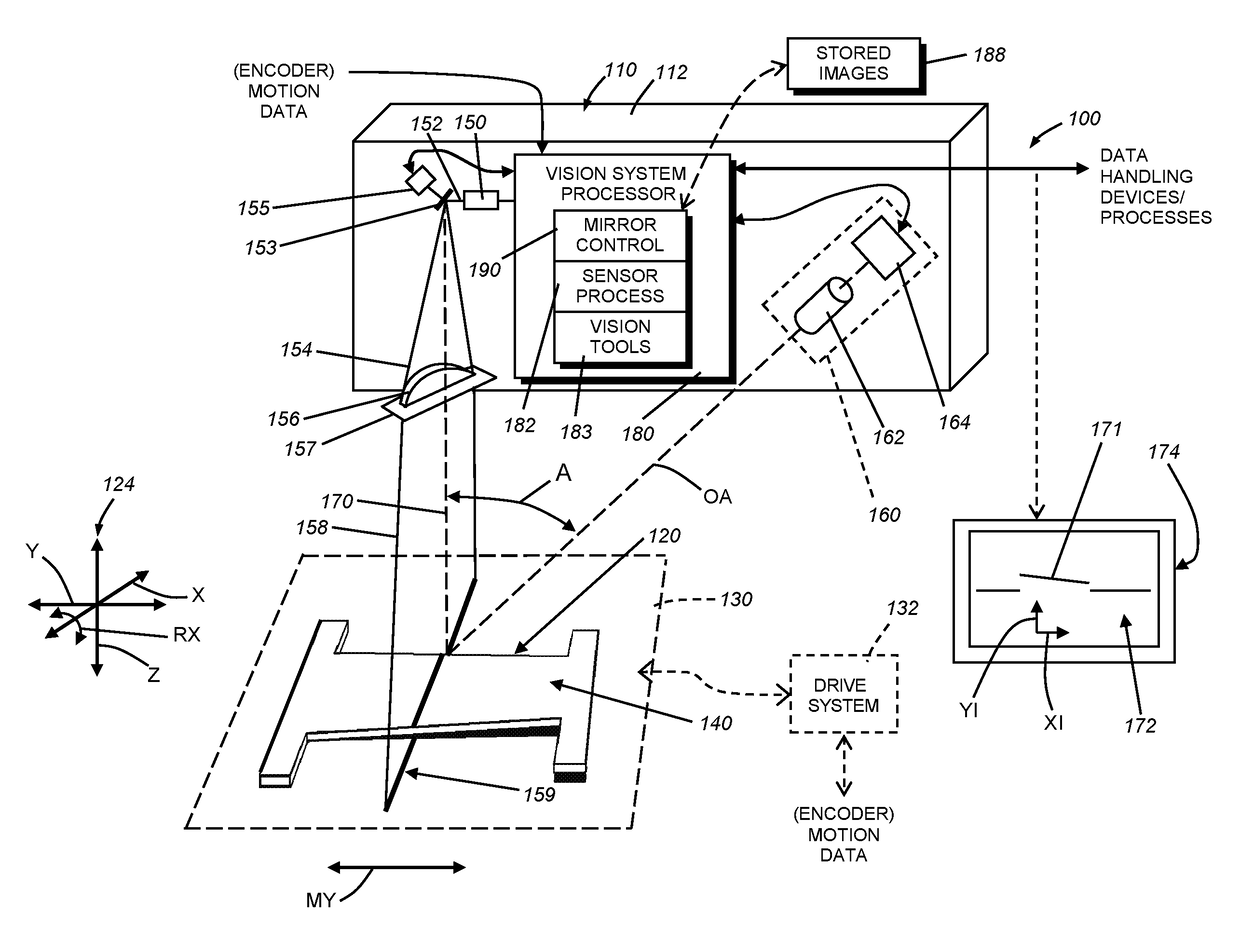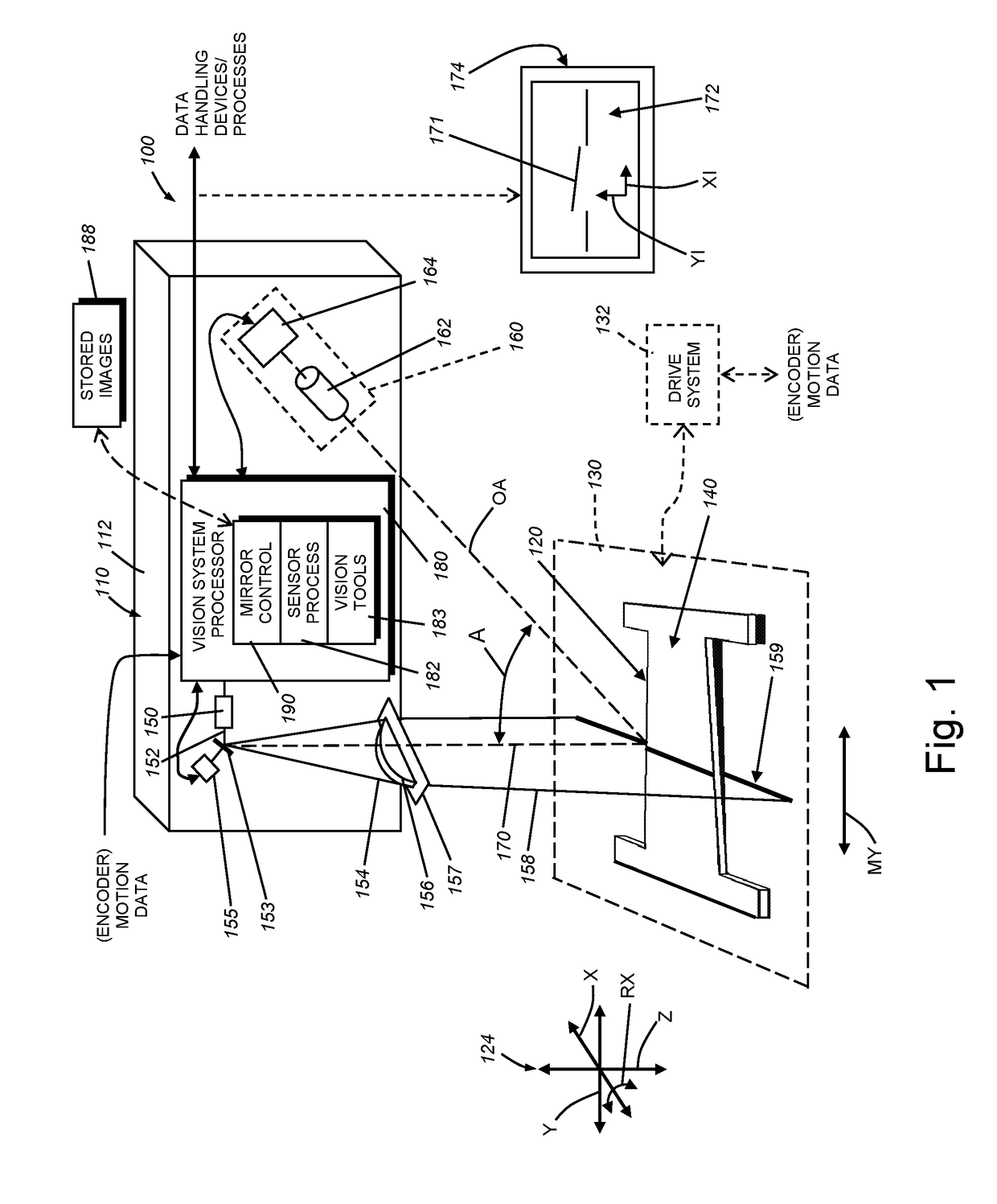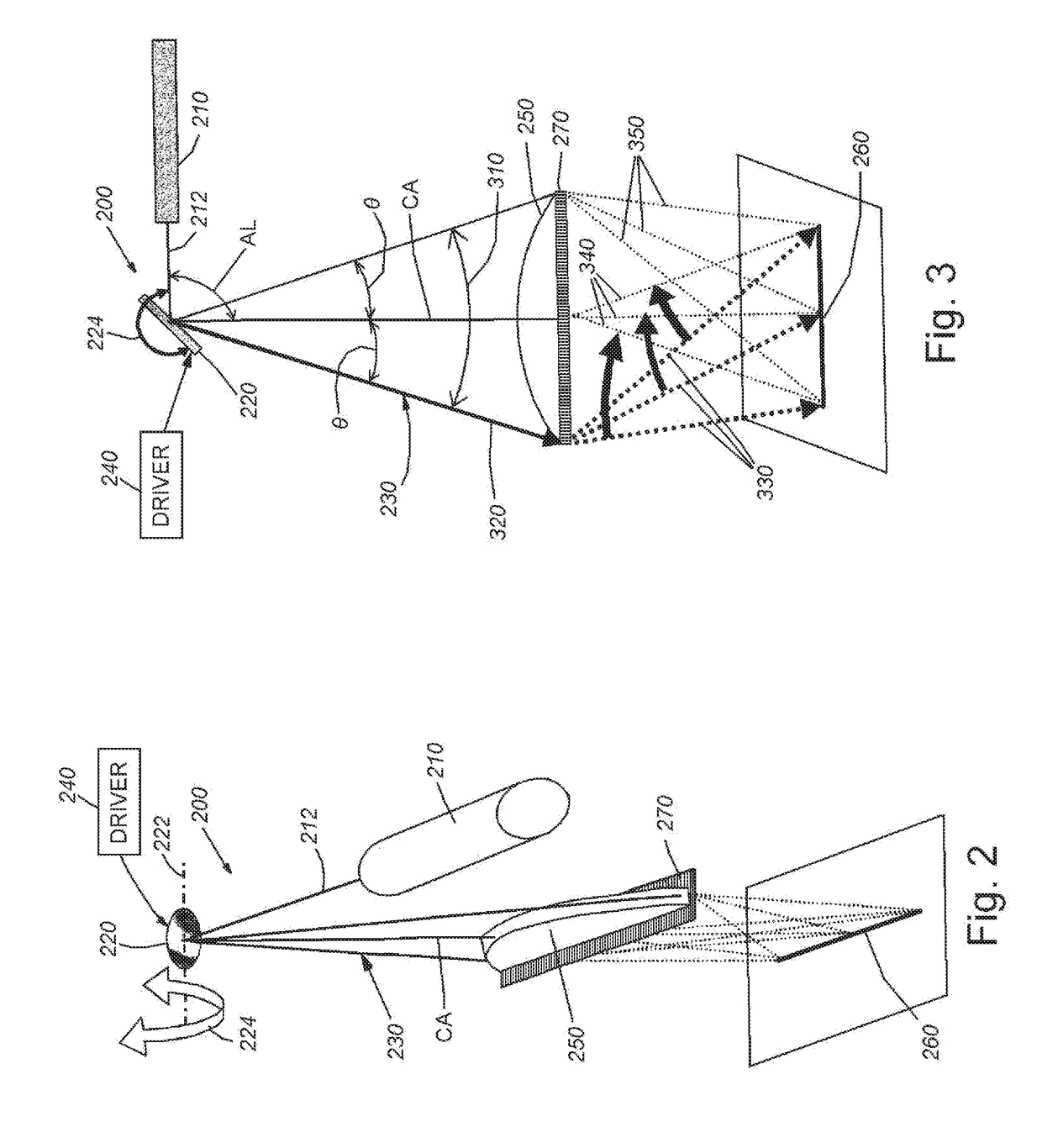System and method for reduced-speckle laser line generation
- Summary
- Abstract
- Description
- Claims
- Application Information
AI Technical Summary
Benefits of technology
Problems solved by technology
Method used
Image
Examples
Embodiment Construction
I. Vision System Implementation
[0029]By way of non-limiting example, FIG. 1 shows a vision system arrangement 100 including a laser displacement sensor (DS) assembly 110 oriented to image an object 120 (also sometimes referred to as a “part”). The DS assembly 110 can be contained in a single housing 112 that is mounted at an appropriate location with respect to the imaged scene. In alternate embodiments, the displacement sensor can comprise discrete, separated subcomponents. In an exemplary implementation, the object 120 and the displacement sensor 110 are in relative motion (double arrow MY) with either the displacement sensor 110, the object 120, or both, moving (the scan motion direction) along at least one axis of the relative coordinate system 124 (in this example, the physical y-axis direction). In a typical arrangement, the object 120 is located on a motion conveyance 130 (shown in phantom) that provides motion data from an encoder or similar device operatively connected to t...
PUM
 Login to View More
Login to View More Abstract
Description
Claims
Application Information
 Login to View More
Login to View More - R&D
- Intellectual Property
- Life Sciences
- Materials
- Tech Scout
- Unparalleled Data Quality
- Higher Quality Content
- 60% Fewer Hallucinations
Browse by: Latest US Patents, China's latest patents, Technical Efficacy Thesaurus, Application Domain, Technology Topic, Popular Technical Reports.
© 2025 PatSnap. All rights reserved.Legal|Privacy policy|Modern Slavery Act Transparency Statement|Sitemap|About US| Contact US: help@patsnap.com



